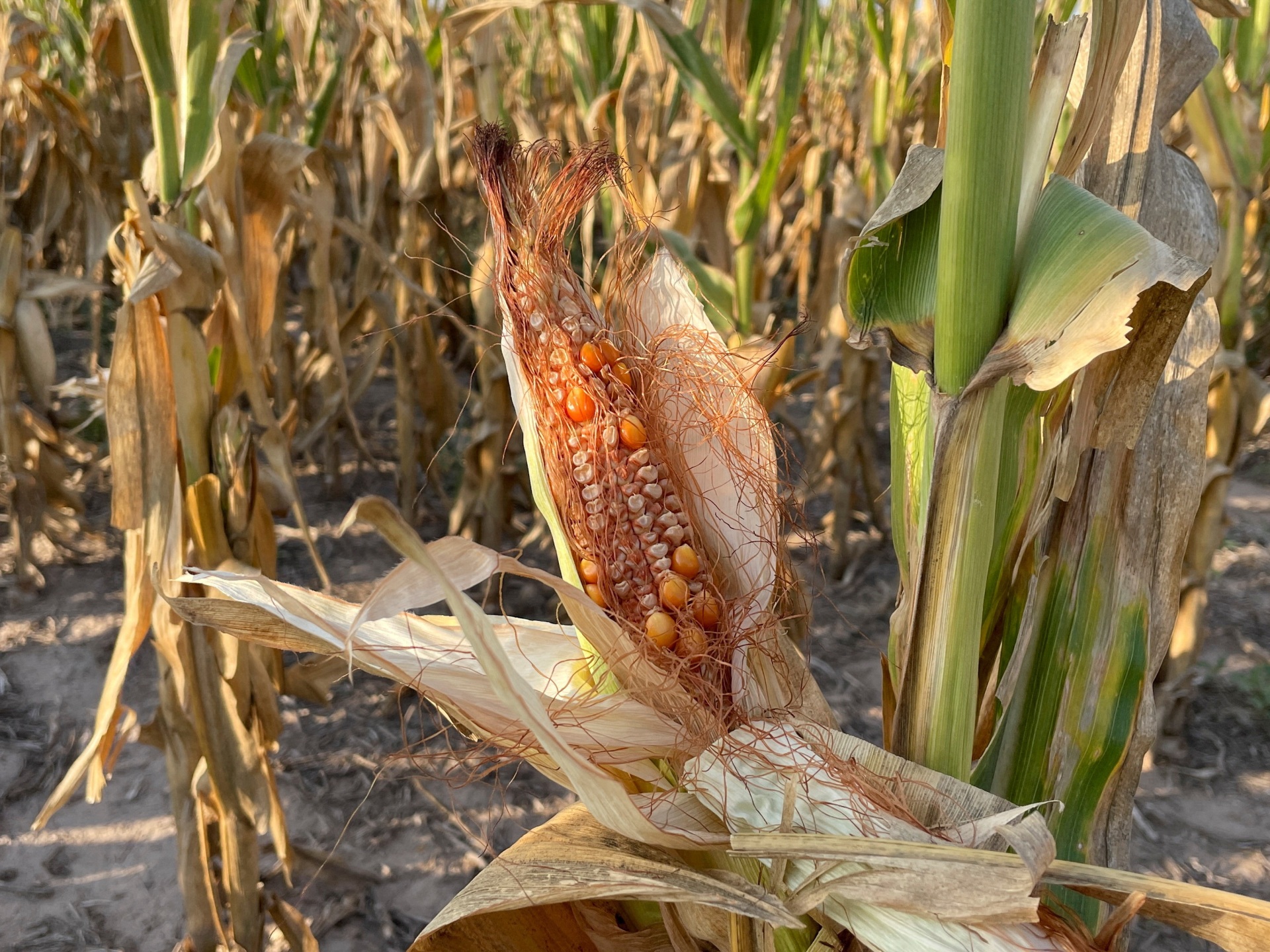A historic drought ravaging Argentina’s crops has deepened the grain-exporting giant’s economic crisis, heightening default fears and putting at risk targets agreed on with the International Monetary Fund (IMF).
The South American nation, the world’s top exporter of processed soy and number-three source of corn, is in the grip of its worst drought in more than 60 years, which has led to repeated sharp cuts to harvest forecasts.
Those forecasts were reduced again on Thursday by the Buenos Aires grain exchange after the Rosario exchange slashed its soy production outlook to 27 million tonnes, the lowest since the turn of the century, when far less of the crop was planted.
A farm’s crops, seen on February 8, turn dry amid a historic lack of rainfall in the northern Argentinian city of Tostado [File: Miguel Lo Bianco/Reuters]
“We are facing an unprecedented climatic event,” Julio Calzada, the head of economic research for the Rosario exchange, told Reuters.
He added that farmers, particularly in the fertile Pampas region, were facing losses of $14bn, with their output expected to be about 50 million tonnes less for crops of soy, corn and wheat.
“It’s unprecedented that the three crops fail. We are all waiting for it to rain,” he added.
The drought is a huge blow for Argentina. As general elections approach in October, the country is already contending with 99-percent inflation and a wall of local and international debt repayments to bondholders and the IMF.
Farmer Gustavo Giailevra, 63, gives water to a cow on February 9, as Argentina suffers from drought conditions [File: Miguel Lo Bianco/Reuters]
Grain is the country’s main export and the faltering crops are stalling plans to rebuild Argentina’s depleted foreign currency reserves.
This, in turn, has prompted talks with the IMF to ease reserve accumulation targets for the year. Analysts have also cut the outlook for the country’s gross domestic product (GDP).
“The situation is dramatic,” said Luis Zubizarreta, head of the chamber for commercial ports and the soybean industry association. “It impacts the country’s entire economic situation and the income of foreign currency at a very critical moment for Argentina.”
He added the flow of grains at ports was at historically low levels “because there is no merchandise”.
The drought affecting Argentinian farmers, which has been exacerbated by high temperatures linked to climate change, goes back in some areas to May 2022. The country has suffered at least eight heat waves in the 2022-2023 season.
The grain exchanges have warned that soy and corn forecasts could fall even further if no rains come. The Rosario exchange’s soy forecast is already at the lowest since the 1999-2000 season and the expected yield is the worst since 1996-1997.
“From what we expected at the [start of the campaign] to today’s situation, I don’t know if we will produce half of it,” said Miguel Calvo, a soybean farmer in central Cordoba province.
“I thought all evils were over and these last eight to 10 days have been the coup de grace due to the heat and lack of rain.”










